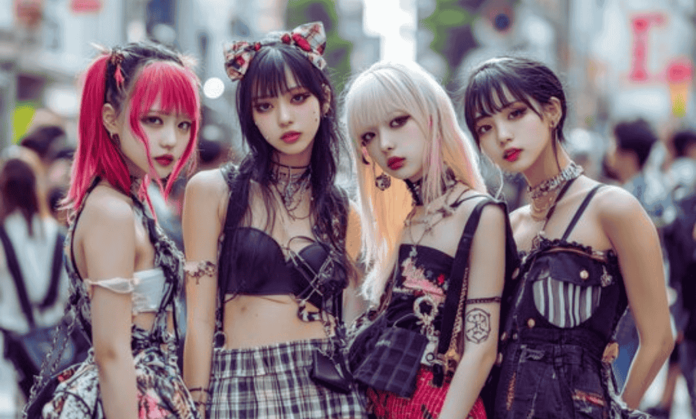What is Harajuku Fashion?
Harajuku Fashion is more than just clothing; it’s a vibrant, ever-evolving culture that thrives on creativity and individuality. Originating in the Harajuku district of Tokyo, this unique style represents a blend of traditional Japanese aesthetics with bold, eclectic, and sometimes outlandish modern influences.
The History of Harajuku Fashion
Post-War Beginnings
After World War II, Harajuku became a hub for American culture in Japan. This exposure to Western fashion sparked a creative revolution among Japanese youth.
The Rise of Street Fashion
By the 1980s, Harajuku’s streets were teeming with young people experimenting with bold styles. The area became synonymous with DIY fashion and subcultural expression.
The Influence of Japanese Culture
Traditional Japanese clothing, such as kimonos and yukatas, began to merge with modern aesthetics, creating a distinct fusion that still influences Harajuku Fashion today.
Key Elements of Harajuku Fashion
Bold Colors and Patterns
Expect neon hues, clashing prints, and fabrics that scream personality. Harajuku Fashion is unapologetically loud.
Layering and Mixing Styles
Layering is a key aspect, combining elements from various styles like gothic, punk, and kawaii to create something unique.
Accessories Galore
Accessories aren’t optional—they’re essential. Think oversized bows, quirky bags, and jewelry that often steal the spotlight.
Popular Harajuku Styles
Lolita Fashion
Sweet Lolita: Soft pastels, frilly dresses, and childlike innocence define this style.
Gothic Lolita: A darker twist with black dresses, lace, and Victorian influences.
Decora Style
This is all about overload—more accessories, more fun. Colorful clips, bracelets, and stickers are staples.
Visual Kei
Inspired by rock bands, this style leans toward dramatic, gender-bending outfits and heavy makeup.
Kawaii Culture
“Kawaii” means “cute,” and this style emphasizes playful, youthful clothing with adorable motifs.
How to Embrace Harajuku Fashion
Tips for Beginners
Start small by experimenting with accessories and layering. Confidence is key!
Shopping for Harajuku Fashion
Visit thrift stores, online marketplaces, or speciality shops like Takeshita Street in Tokyo.
Styling Your Look
Don’t be afraid to mix and match. Harajuku Fashion thrives on breaking the rules.
Harajuku Fashion Icons and Influencers
Kyary Pamyu Pamyu
Known as the queen of kawaii, Kyary is a global ambassador.
Famous Harajuku Brands
Brands like Baby, The Stars Shine Bright and 6%DOKIDOKI define the essence of this culture.
The Global Impact
Influence on Western Trends
From Gwen Stefani’s Harajuku Girls to streetwear brands, this style has made its mark globally.
The Role of Social Media
Platforms like Instagram and TikTok have amplified Harajuku’s reach, inspiring millions.
Harajuku Fashion Today
Modern Adaptations
Today’s Harajuku blends traditional styles with global influences, making it more accessible.
Challenges to Its Authenticity
With its popularity, some fear the original essence of Harajuku is being diluted.
Why Harajuku Fashion Stands Out
A Celebration of Individuality
Harajuku Fashion isn’t about fitting in—it’s about standing out.
A Medium for Self-Expression
Each outfit tells a story, reflecting the wearer’s personality and creativity.
Conclusion
a testament to the power of individuality and creativity. Whether you’re drawn to its bold colours or its deep cultural roots, this style offers something for everyone. It’s not just fashion—it’s a way of life.
FAQs
What is the origin of Harajuku Fashion?
It originated in the Harajuku district of Tokyo after World War II, blending Western and Japanese styles.
Can anyone wear Harajuku Fashion?
Absolutely! celebrates individuality, making it open to everyone.
What are some beginner tips for trying Harajuku Fashion?
Start with bold accessories, experiment with layering, and don’t be afraid to mix patterns.
Are there specific stores for Harajuku Fashion outside Japan?
Yes, online shops and speciality stores worldwide carry Harajuku-inspired clothing.
How has Harajuku Fashion evolved?
It has grown from a local street style to a global phenomenon, adapting modern and traditional influences.
For more information visit my blog:-zisbrand.com

